I try to never take for granted that, as an electric vehicle journalist, I’m often given the opportunity to test out some of the most interesting EVs on the planet. They come in many forms. Some have wheels. Some have wings. Some defy classification altogether. But the one thing they all have in common is that they use batteries and electric motors to go vroom, whish, or splash.
Just for fun as we round out the year, I wanted to take a look back at five of the most far-out electric vehicles I tested in 2021. Some are cool, some are weird, but all were awesome to experience and share. Now we can experience them together one more time and send off the year with a bang!
Arcimoto FUV and Roadster
Oregon-based Arcimoto deserves some serious credit for creating a novel electric vehicle, building it in the US, and actually delivering it to customers. Production began in 2019 and the company has big plans for expansion.
We hear about three-wheeled electric vehicles all the time. There are plenty of new ones grabbing headlines. But it’s rare to see them succeed to this degree.
Arcimoto’s FUV (or fun utility vehicle) is just that – it’s an incredibly fun thing to drive.
I say “thing” because I still don’t know exactly what to call it. It’s not a car. It’s technically a motorcycle-class vehicle, but I think we can all agree it’s not really a motorcycle either, at least not in the traditional sense.
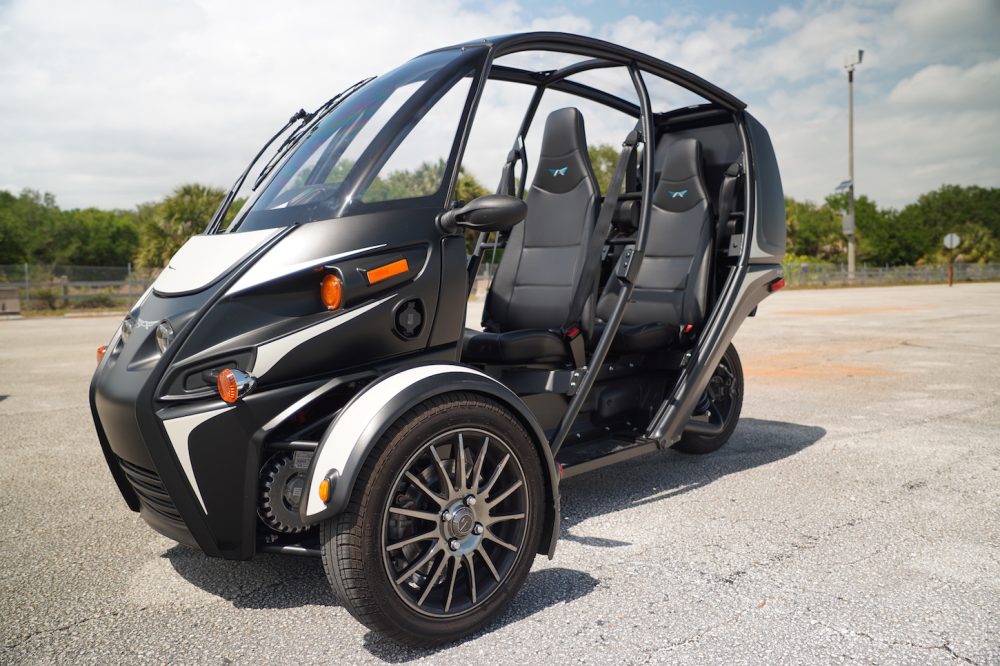
The FUV is semi-enclosed, meaning you’re wrapped in a roll cage that gives you much more confidence than you have on a motorcycle.
The sides are still open so you get that wind-in-your- hair feeling (and you don’t have to wear a helmet in most states due to the roll cage situation).
You can get door options if you want to go more enclosed, but I tested an FUV in Florida where the open fun-mobile design was perfect.
The three-wheeled tadpole trike format made it feel perfectly stable, even when cornering hard. The FUV sprinted up to speed quickly thanks to its 77 horsepower (57 kW) motor, maxing out at around 75 mph (120 km/h).
It was wild. It was entertaining. And it was even safe feeling, believe it or not. Of course these motorcycle-class vehicles don’t have to conform to crash testing or other regulations designed for cars, so you should avoid swapping paint with any other cars. But compared to the many miles a year I do on electric motorcycles, my risk calculation felt like it was much closer to the relaxing end of the spectrum.
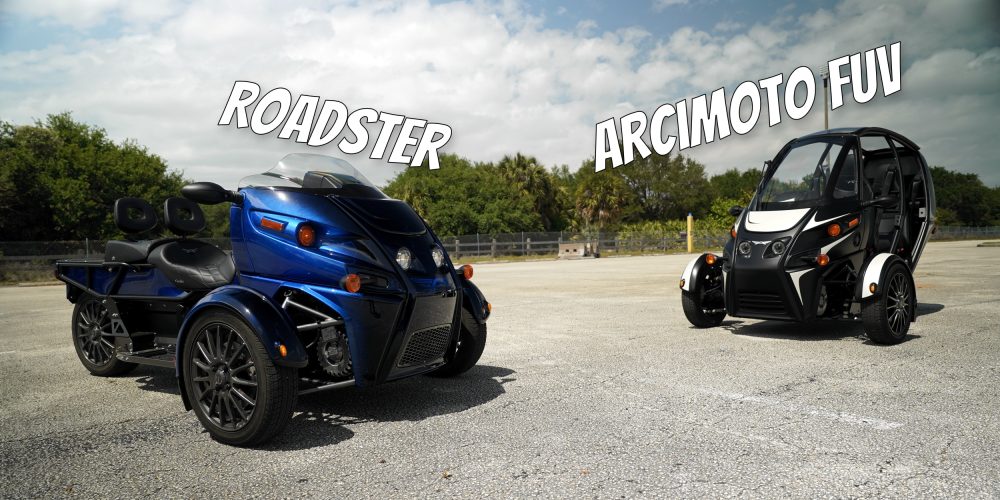
But of course then there’s the Arcimoto Roadster, which is the chopped-top version of the FUV. This one looses the protective cocoon and instead turns the thing into a Slingshot-style three-wheeled motorcycle. And yes, you’ll probably have to wear a helmet on this one. Except, not surprisingly, in Florida (though that didn’t stop me from going above and beyond with a half helmet that felt like it was wearing me).
The Arcimoto Roadster was hella fun as well, and perhaps even more thrilling than the FUV. The seating position gives it a totally different ride than the FUV, even though they are built on the same platform. The Roadster feels like a high-power trike motorcycle, while the FUV feels like a high-power go-kart.
The Roadster was a fun and wild ride, that’s for sure. But it didn’t feel quite as practical as the FUV, which had big bucket seats, dual seat belts, and a storage trunk for your groceries.
Both vehicles were a blast to drive though. You’ll definitely want to check out my testing video below to come along for the ride.
The FUV is a bit pricey at its current MSRP of $17,900, though the company hopes to bring that down to around $12,000 once production scales up.
I’m actually glad they haven’t reached that price yet, otherwise it would have been hard for me to resist buying one – that’s how much fun it was to ride. And with two seats and (admittedly modest) cargo space, I could at least tell myself it is somewhat practical as well.
Candela C-7 electric hydrofoil boat
I made it out to Stockholm this year just before it got too cold to go boating. And I’m glad I did, because I got to tour the Swedish electric boat builder Candela’s factory and test our their flying electric boats.
The company’s first model, the C-7, uses a pair of hydrofoils to fly over the surface of the water.
The hydrofoils lift the boat out of the water and significantly reduce drag, which of course reduces how much expensive battery the boat needs.
That higher efficiency is key to Candela’s success. While driving the boat, I found that I was achieving the same efficiency at around 5 knots (when the boat is down in the water) as I was at 22 knots (when the boat has already lifted up out of the water and flies on its underwater wings).
A top speed of 30 knots is possible, but 22 knots seems to be the sweet spot for efficiency and makes a great cruising speed.
The weirdest thing about being in one of Candelas boats while underway is that the ride is just so smooth and quiet. You almost feel like you’re in an airplane, not a boat. You hear a bit of motor whirring and you feel a slight vibration, but that’s it. There’s no crashing up and down like a V-hull boat. There’s no rocking with the waves. You just fly smoothly.
It’s also a trippy experience to look out the back and see no wake.
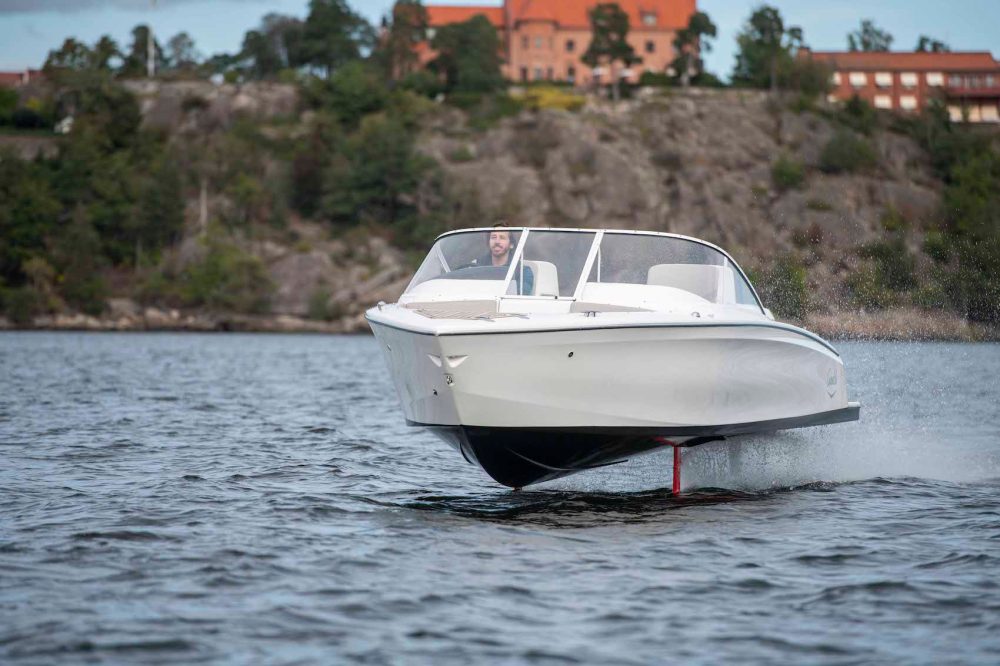
Speaking of wakes, one of the most common questions people ask me is if the boat can cross wakes or waves. And the answer is yes, most of the time it can. The hydrofoil is computer controlled and the boat automatically adjusts it in real time when you hit wakes, waves, or anything else that could potentially throw the boat off kilter.
The only problem is if you hit too large a wake, which I did when crossing behind a 100-plus-foot ferry boat. Then the Candela automatically landed and I just had to take off on the other side of the wake.
But Candela is already beginning production on their next model, the C-8, which is larger and more robust. It can cross larger waves and even includes fancy features like a small cabin that sleeps two adults and two children, and even has a shower and toilet (or head, as my oceanographer father would correct me).
That boat will also employ Candela’s new C-POD motors that are completely submerged, meaning the boat should be whisper quiet.
If you want to see the Candela C-7 in action and watch my test ride as I learned to solo-pilot the boat, check out the video below.
Chang-Li mini electric pickup truck
For those who aren’t aware of the gem that is the Awesomely Weird Alibaba Electric Vehicle of the Week, check this out. Each week I cover a new weird, funny, or outrageous EV that I discovered while hunting around on Alibaba.
Back in June I found an awesome little electric pickup truck that looked like someone took the front end off a Chevy Silverado, stuck it on the back of a Ford F150, then shrunk the whole thing down by a third.
I was so smitten with the little truck after writing about it that I actually put my money where my mouth was and ponied up for one. The $2,000 truck turned out to be a lot more expensive after I loaded it up with $1,000 worth of batteries, another $500 for an air conditioner and hydraulic dumping bed, then paid $2,200 more in sea freight to get it to Miami port.
The whole ordeal was a personal saga for me that saw me video chatting with the factory to watch my truck being prepared, poring over US import law and vehicle registration loopholes, and then trying to virtually chase my truck around the world when the cargo ship that was carrying it arrived in port but the truck was nowhere to be found. The complete escapade took several months, but once the truck arrived I filmed an entire unboxing video on my personal YouTube channel that ended up getting over 5 million views.
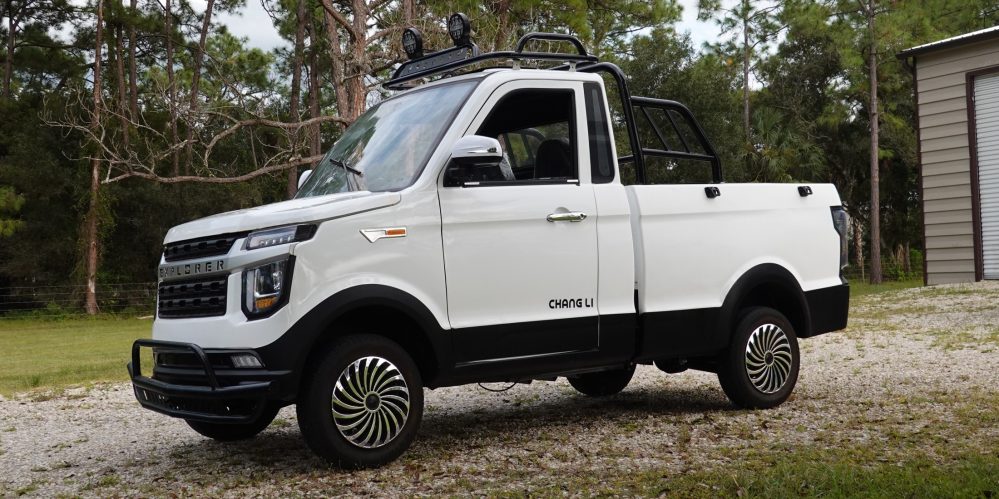
The truck is technically not street legal (no Chang Li cars are street legal in the US because they don’t have DOT parts and the factory isn’t registered with the NHTSA). So now it stays on my parents’ 10-acre property where it lives a moderately comfortable life as a farm truck.
Its main uses have been hauling garbage to the street, performing yard/maintenance work, driving around to visit the neighbors on the other homesteads and ranches in the area, and other utility type jobs where an enclosed rolling wheel-barrel would be useful.
Even if it were road legal, its top speed of 25 mph (40 km/h) and the fact that it meets absolutely zero minimum safety regulations would give me serious pause about taking it on any real roads.
But as a utility truck, it’s been working great. It is more capable than a golf cart, has awesome creature comforts like electric windows/locks, air conditioning, windshield wiper and washer fluid, hydraulic dumping bed, vented sunroof, LED spot lights, infotainment system, etc.
I’ve even managed to recharge it using solar power from my Jackery 1500 unit, which was a pretty fun exercise in making the little truck even more “green.”
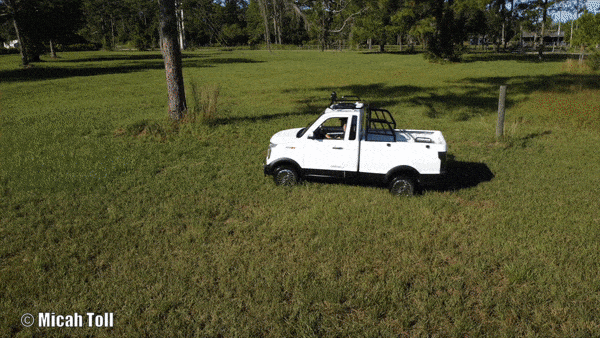
CSC Monterey electric scooter
Of all the fun electric vehicles I had the pleasure of testing this year, the CSC Monterey electric scooter was one of the coolest.
It’s not particularly fast or powerful, but damn if you don’t feel like a million bucks while riding it.
The 32 mph (52 km/h) scooter has good enough performance for basic city use and getting around town. It’s not going to win any races, but that’s okay. Because from the moment you hop on, you feel as if you’re transported back in time to the 1960s.
The design is of course a ripoff homage to the most popular vehicle ever sold, the Honda Cub motorcycles. I actually own a late ’60s Honda Cub and I can say the CSC Monterey does a very nice job of mimicking many of its features, even right down to touch points like the metal switch housings and brake levers.
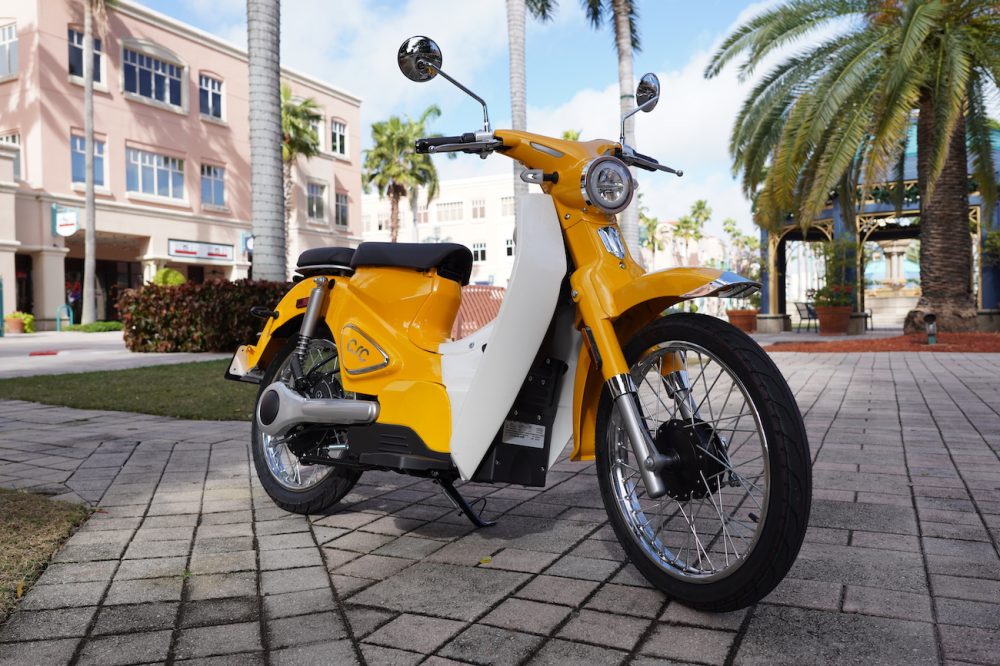
The speedometer is a delightfully antiquated needle gauge, though the four segment battery gauge certainly leaves some uncomfortable guesswork as to how much charge you have left.
The big wheels help the scooter ride surprisingly smoothly, rolling over cracks and potholes with more ease than any other electric scooter I’ve tested.
It may not be a fast scooter, but it’s just so much fun to cruise around on that you don’t even care. If anything, it’s fun being able to see the smiles on peoples faces as you go by, and even having enough time to hear someone shout, “Whoa, cool bike man” as you give a resolute thumbs up.
And at just $2,600 shipped to your door, the nostalgic bike is a steal.
Again, you’ll want to see it in action to truly pick up all the chill vibes this thing is putting down.
Firduo
Last but not least, I’m going to finish this list off with one more electric watercraft. The Firduo electric bodyboard may be stretching the definition of an electric vehicle, but it’s so much fun that I don’t even care.
This one is less practical or more good old-fashioned fun.
Powered by a pair of 2,000W electric motors with food processor-style propeller blades on them, the Firduo rockets around the water with 340 N of thrust (or 76 lb for those of us that can more easily visualize pounds than newtons).
That’s enough power for speeds of 5-6 mph (4.3-5.2 knots or 8-10 km/h). That doesn’t sound like much, but it feels pretty darn fast when you’re being dragged along the surface of the water and trying to hold your board shorts on.
The Fidruo can also dive to depths of up to 30 meters (100 feet), meaning you can explore the world underwater. That was probably my favorite part of the entire experience, being able to scoot around on the ocean floor.
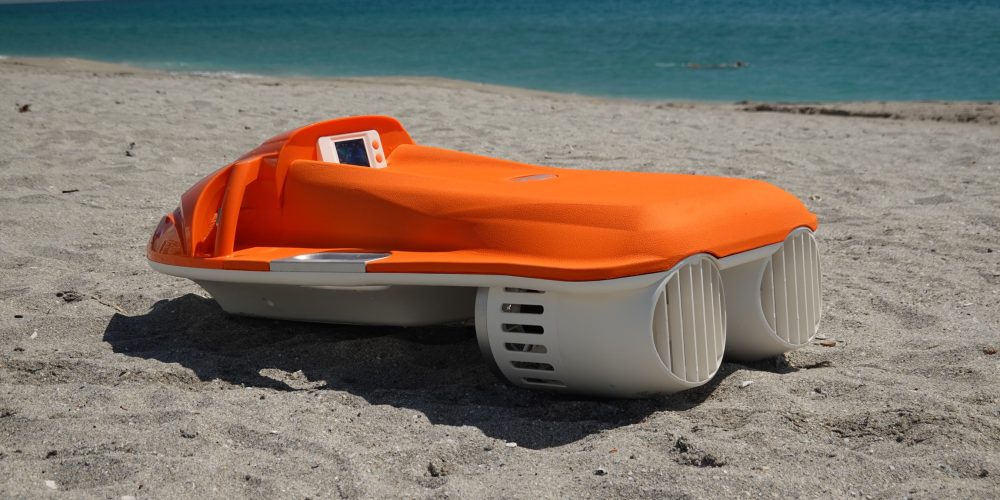
Firduo’s electric bodyboard did take a little while to get used to the controls. There’s really only one control (pull the button trigger on the right handle to go), but making turns is a bodyweight and angle proposition, so you have to learn to harness your inner dolphin.
The nice thing about the Firduo is that it is insanely bouyant as well, so if you ever get out too far or run into an emergency, you could just float on it.
Granted, it has labels in a million places stating that it is not a lifesaving device. But its extreme buoyancy begs to differ.
I differed so much that I even lived out a Baywatch fantasy using it as my red lifeguard can. Check out my Baywatch montage in my review video below.
What’s next for 2022?
And there you have it, my top five coolest, weirdest, and most awesome EV test rides of 2021.
What could 2022 hold in store?
What would you like to see me test next year?
Let me know with a shoutout in the comments section below!
FTC: We use income earning auto affiliate links. More.

